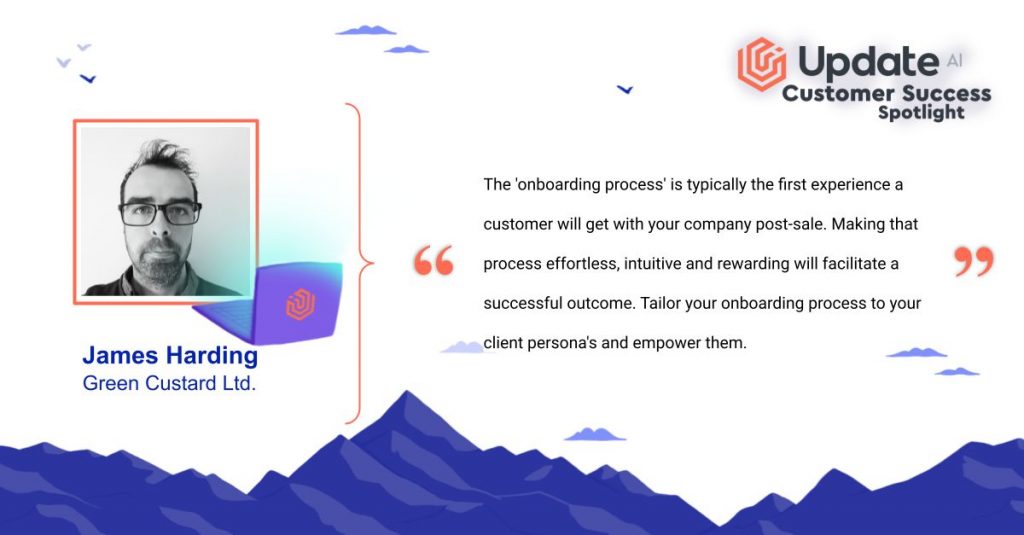Recently I was asked to contribute to Update AI’s Customer Success Spotlight – Customer Onboarding. I thought I would take the opportunity to share my overview here.
Update AI – Customer Success Spotlight

Depending on the organisation, the project, and the customer, as a CSM you may or may not have had some interaction with the customer prior to the initial onboarding process. Regardless of which, this is likely to be the first time you are engaging with the customer in any depth post-sale. While all customer interactions are important, the onboarding process is probably the most important as it sets the customers’ expectations for your working relationship ahead.
Customer Onboarding Process
During a typical Customer Onboarding Process, there are a number of objectives that need to be achieved. Some of these are obvious and easy to document, securing the required information from the customer, outlining success criteria, setting timelines and expectations, launch objectives, quarterly objectives, and so on. While others, arguably more important to the long-term success of the customer, are not so easy to document, such as building a relationship built on trust (both ways), honesty, openness, reliability, and transparency.
Make an effortless customer onboarding process
During the onboarding process, it is important to make it as effortless as possible for the customer. You want the process to come across as friendly, light-weight, efficient, informative, and dare I say fun and rewarding. Even if the reality is, it is setting the foundations for a very important and serious project and contains a lot of hard work from both parties.
The customer is likely to be juggling many tasks, projects, SaaS offerings, and timelines. Whilst it’s part of a CSMs job to help the customer obtain success through your engagement/offering quickly (quick to wow), sometimes the customer onboarding process can be drawn out by the customer. Taking a long time to deliver information, access to integrations or people, be available for a call, invite other third parties to contribute, etc. If your project with the customer is not a top priority in their eyes, and it seems a time-consuming, labor-intensive, slow activity, they are more likely to try and kick the can down the road.
If on the other hand, the project is not their top priority, but they know you will only keep them for a short time, be very efficient, not generate a crazy amount of work for them, they know it will help progress the project for little effort on their part, and they genuinely enjoy talking to you, you will find them far more likely engage and promptly at that.
As the relationship develops and gets tighter, you can then expand a little on the effort needed on the customers’ side. By this point, you have a better understanding of your customers workload, priorities, other timelines, and what is an acceptable level of work to give them at any one time. Whilst at the same time, the customer has a better understanding on how their work contributes to the success of the project, and how it can be broken down to seem light-weight.
Too many times I have seen CSMs bombard new customers with requests for information, assets, and access to other systems for integration, and even referrals before getting to truly understand their new customers world, to give them an effortless, enjoyable and long lasting experience.
